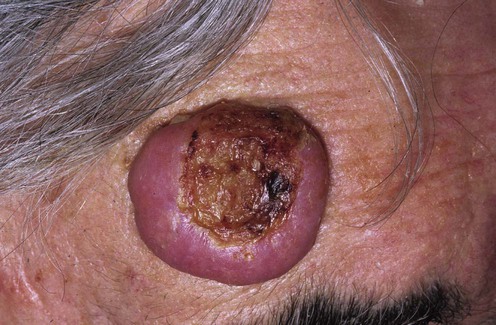Keratoacanthoma

Management strategy
A KA classically has three clinical stages:
 Proliferative – early rapid growth to form a crateriform nodule
Proliferative – early rapid growth to form a crateriform nodule
 Involutional – the lesion regresses, usually within 4 to 8 months.
Involutional – the lesion regresses, usually within 4 to 8 months.

A KA classically has three clinical stages:
 Proliferative – early rapid growth to form a crateriform nodule
Proliferative – early rapid growth to form a crateriform nodule
 Involutional – the lesion regresses, usually within 4 to 8 months.
Involutional – the lesion regresses, usually within 4 to 8 months.
